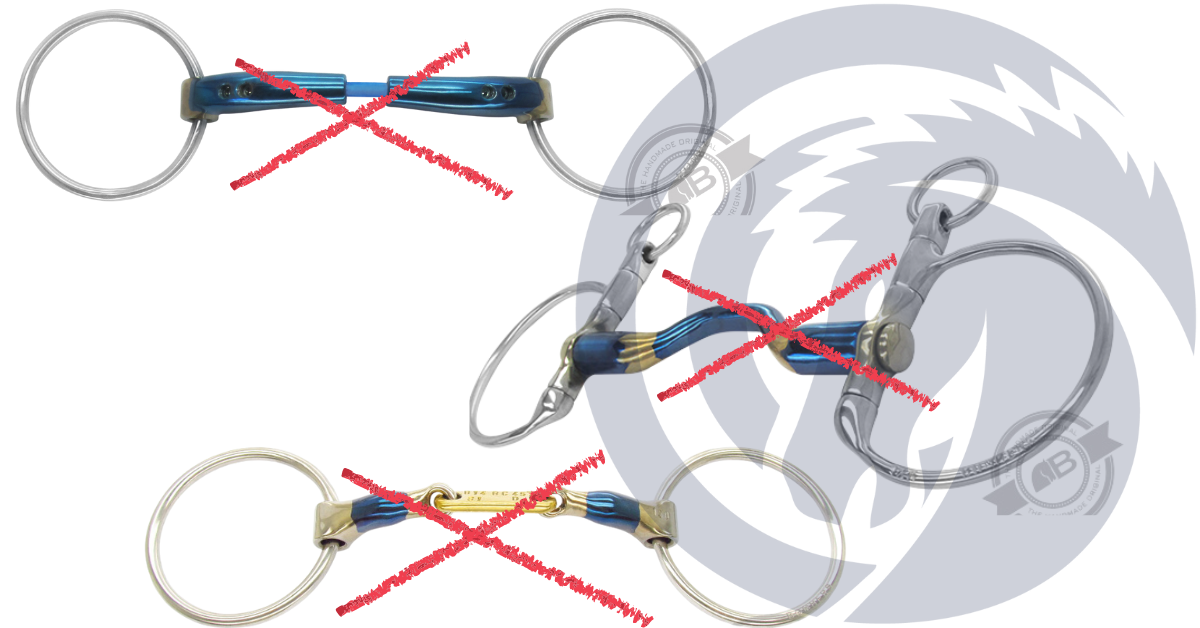When BD and FEI make life tricky for you as a rider and for your horse. Olivia and Kirstie have written this blog to help the riders who have been affected with the updated rule changes from January 1st 2023.
The FEI state Article 434 Saddlery – Equipment – Rule 3. Bits must not place mechanical restraint upon the tongue.
A conflicting statement to make, considering that the purpose of the bit is to provide the rider with control over the horse, by applying pressure on an extremely sensitive area of the horse’s body. The definition of “mechanical restraint” is the use of an object or device to restrict movement, which happens with any bit design. Frustratingly the majority of the bits which were allowed and have now been recently banned, has made us question if the horse’s welfare really is their top priority?
Olivia and Kirstie are frequently being asked “My bit is now banned, what can I use?”. As many of you know, FEI changed their tack rules which meant that many bit designs are no longer legal. This has been a huge conundrum, especially for those horses that are fussy and have only settled in the modern designed bits that have been bought to market.
We are going to run through the a list of commonly used bits which have been banned and look at how they work, and offer you options for you to try. We have also written in italics how the bits work and raised some questions.
- Swivel Cheeks and Mouthpieces
- Plate Link Bits
- Cable Bits


Which bits have been banned?
Fager Carl and Claudia
It is a lightweight double jointed bit available in either Titanium (Carl) or Sweet Iron (Claudia). These bits are recommended for fussy horses who can be strong or lean on the bit. The Carl or Claudia can also benefit a tongue sensitive horse allowing them to be more willing to accept the contact.
The Carl/Claudia plate will lie flat on the tongue at rest but under rein pressure the plate will tip/rotate on to the tongue. This will make it suitable for strong horses as you are applying more pressure on the tongue. How much relief would this mouthpiece actually give to a tongue sensitive horse?
Fager Alexander
The Alexander is a sweet iron mouth piece which has slightly curved arms to the double jointed flat plate link set at 45 degrees. This bit is recommended for horses who are unhappy in their current bit and reluctant to soften. The Alexander creates both bar and tongue pressure.
The angle of the tongue plate at rest appears to change from Loose Ring to Eggbutt. This changes the how much pressure is applied to the tongue. The action of this mouthpiece as a Loose Ring enables the plate to stay flatter on the tongue under rein tension, maintaining an even tongue pressure. This doesn’t appear to be the case for the Eggbutt which will in turn give more pressure.
Fager Loose Baucher
We have picked this bit as the mouthpiece is legal but the cheek is not. All the Fager Loose Bauchers are no longer legal. The Loose Baucher has been designed to reduce the pressure and protect the corners of the mouth by transferring the pressure further down the jaw.
The Loose Baucher cheekpiece provides an interesting combination of the lift and poll relief of a baucher but with the softness and quick releasing pressure of a loose ring. It also provides some stability as it is still a fixed cheek.
Bombers DC Dressage
Bombers DC Dressage is designed to remove as many pressures as possible, creating a safe and comfortable communication between horse and rider. The key feature of the cheek pieces is the loose ring which is attached to the cheek piece of the bridle which also can rotate, ensuring the poll and cheek area is relieved from any rein engagement.
The DC Dressage is sadly a huge loss to many horses and riders as it has worked beautifully for sensitive and fussy horses and ponies. This bit hasn’t been designed to be a strong bit, in fact quite the opposite. The horse has more control over the position of the mouthpiece so they can place it at the angle they are most comfortable with. In particular this has worked for individuals which can be resistant to the contact, lean or feel strong. You can maintain a consistent contact without it being strong and the horse feeling trapped due to the swivel mechanisms. The swivel design prevents the horse from being to lean/block you quite so easily. There are similarities between this bit ring and the Fager Loose Baucher as both have been designed to reduce bit pressure and improve comfort for the horse. For us, this is a real shame that they have been banned, when animal welfare should be paramount.
Bombers Dressage Control Plate
The Dressage Control Plate is a plate link that is set at 45° to follow the contour of the horse’s tongue. The plate sits flat on the tongue offering consistent tongue pressure over a greater surface area. The length of the plate greatly reduces tongue pinch and bar pressure, creating a secure feeling on the tongue with a forgiving action on the edges.
The Dressage Control Plate and double jointed plate link bits have been banned due to the FEI stating that there is a risk of the bit being put in the horse’s mouth upside down and therefore being very harsh. Control Plates can be very useful for young athletic performance horse’s who require a consistent contact but are also strong and sensitive. Often the concentrated pressure from a small lozenge shaped bit, is too sharp and they may evade this type of pressure. We are frustrated that all Plate Links have been banned yet the French Link (which is a plate link mouthpiece) is still legal. This is on the premise that it is considered similar to a lozenge mouthpiece. When you look at the angle of the French Link plate and the loops that connect the arms to the plate, they create sharp pressure points directly on to the tongue at different angles. This is generally unavoidable with a machine pressed bit. This could be considered more severe than a correctly designed and fitted Control Plate with the purpose of lying flat on the tongue. FEI/BD haven’t specified the difference between a French Link and a Plate Link, considering a French Link is a Plate Link?!!
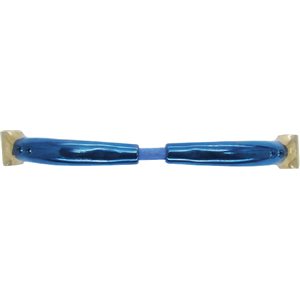
Bombers development of the Snaffle Cable reduces the nutcracker action with the added benefit of the spring back action of the cable, further reducing the pressure in all areas. By eliminating the link joining the mouth pieces a further pressure point is removed. This makes it a softer bit than conventional single jointed snaffles.
The Elliptical Snaffle Cable is the lozenge version of the Snaffle Cable and reduces the squeeze even more. The innovation of an Elliptical Snaffle Cable negates the need for the centre joining links of the standard 3 piece bit, further reducing pressure points. The cable offers an interesting behaviour of “spring-back”, which actively returns the bit to neutral.
The FEI banned the Cable Bits as they do not look like the drawings in the rule book. These bits have been so beneficial for a number of horses who have struggled to accept standard types of bits. Particularly horse’s which struggle with any type of squeezing or compression created by jointed bits. The flexible cable provides a spongey feel which helps horses that do not like the restriction of a solid mouthpiece. Again, this seems slightly ludicrous, considering the purpose is to reduce pressure and increase comfort.
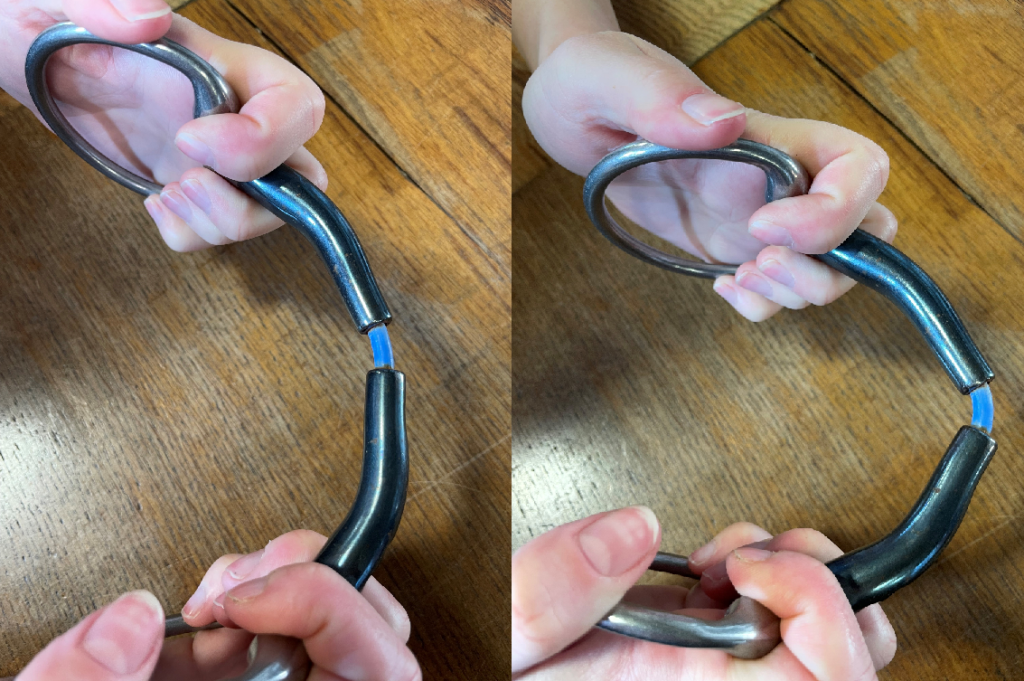
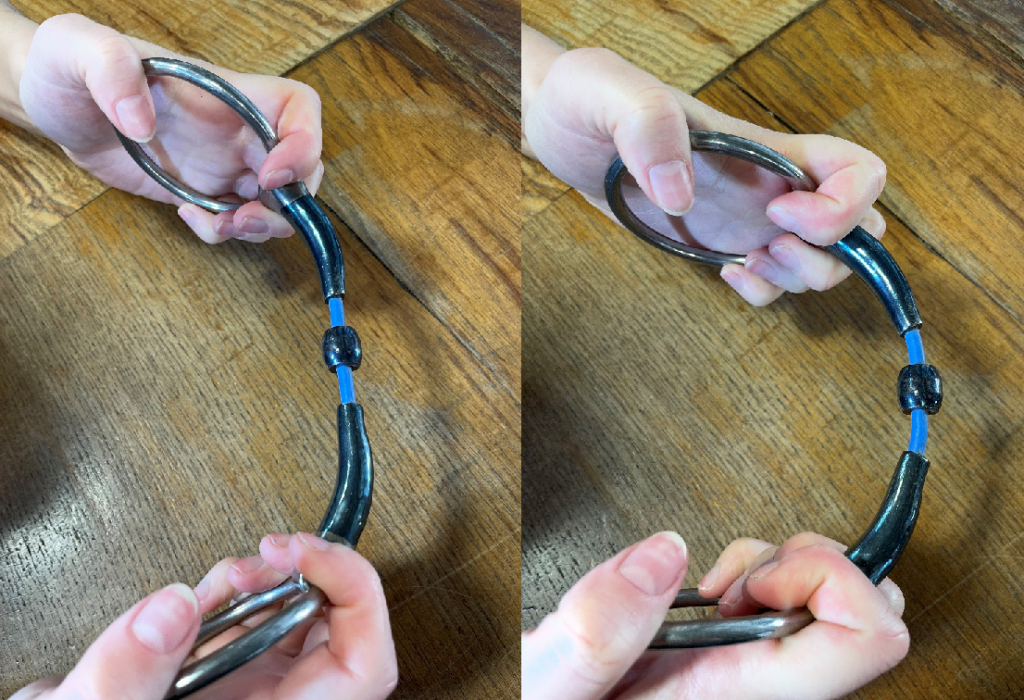
We always recommend if you’re unsure how your bit should go in your horse’s mouth, contact us for advice.
What can I use instead?
Plate Links
The purpose of a Plate Link is to focus the bit pressure evenly on to the tongue and minimise squeeze on the tongue and the bars. With this in mind, these are some options.
Bombers Barrel 30
Neue Schule Turtle Tactio
Neue Schule Team Up
Myler MB02 Comfort Snaffle
Ironically you could opt for a French Link as the plate provides a lot of tongue pressure.
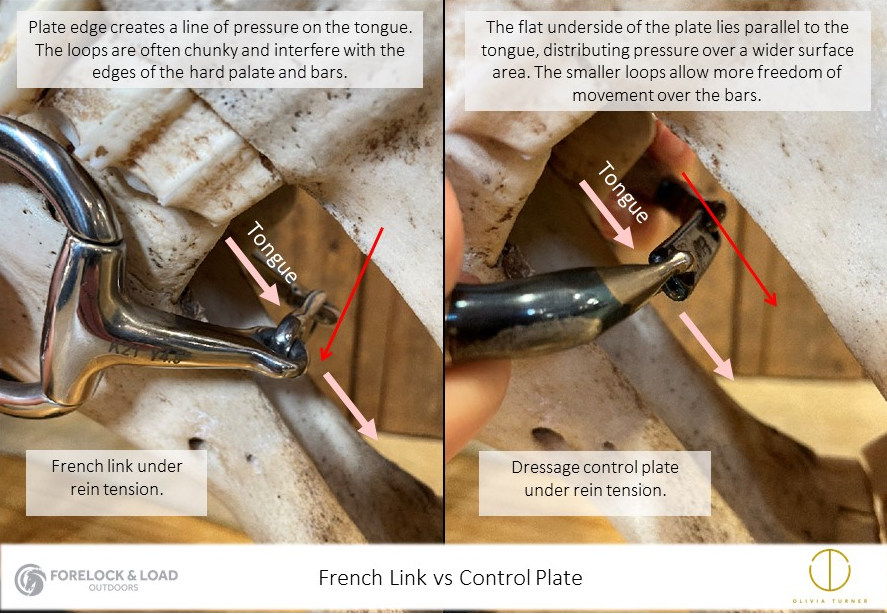
Bombers DC Dressage and Fager Loose Baucher
The aim of these bits is to reduce as many pressure points as possible but still offer the stability of a fixed cheek. We are looking for something that provides both stability and softness. We would look for a Drop Cheek with a light and moveable mouthpiece.
Fager Baby Fulmer (with a Dressage legal mouthpiece). These won’t give you as much lift as the Loose Baucher but will offer a close compromise.
Fager Baucher with a light moveable mouthpiece that is Dressage legal.
Bombers Drop Cheek McHardy (sweet iron/titanium)
Bombers Drop Cheek Ported Barrel
Bombers Drop Cheek Happy Tongue (sweet iron/titanium)
Cable Bits
These are slightly more difficult to replace but what you are looking for is something that gives the horse a spongey feel and reduction in squeeze and pressure.
Sprenger Flex Control Mullen Mouth
Bombers Ultra Comfy Lock Up
Bombers Elliptical Lock Up
Bombers Moulded Mullen
EquiKind Jointed Snaffle

